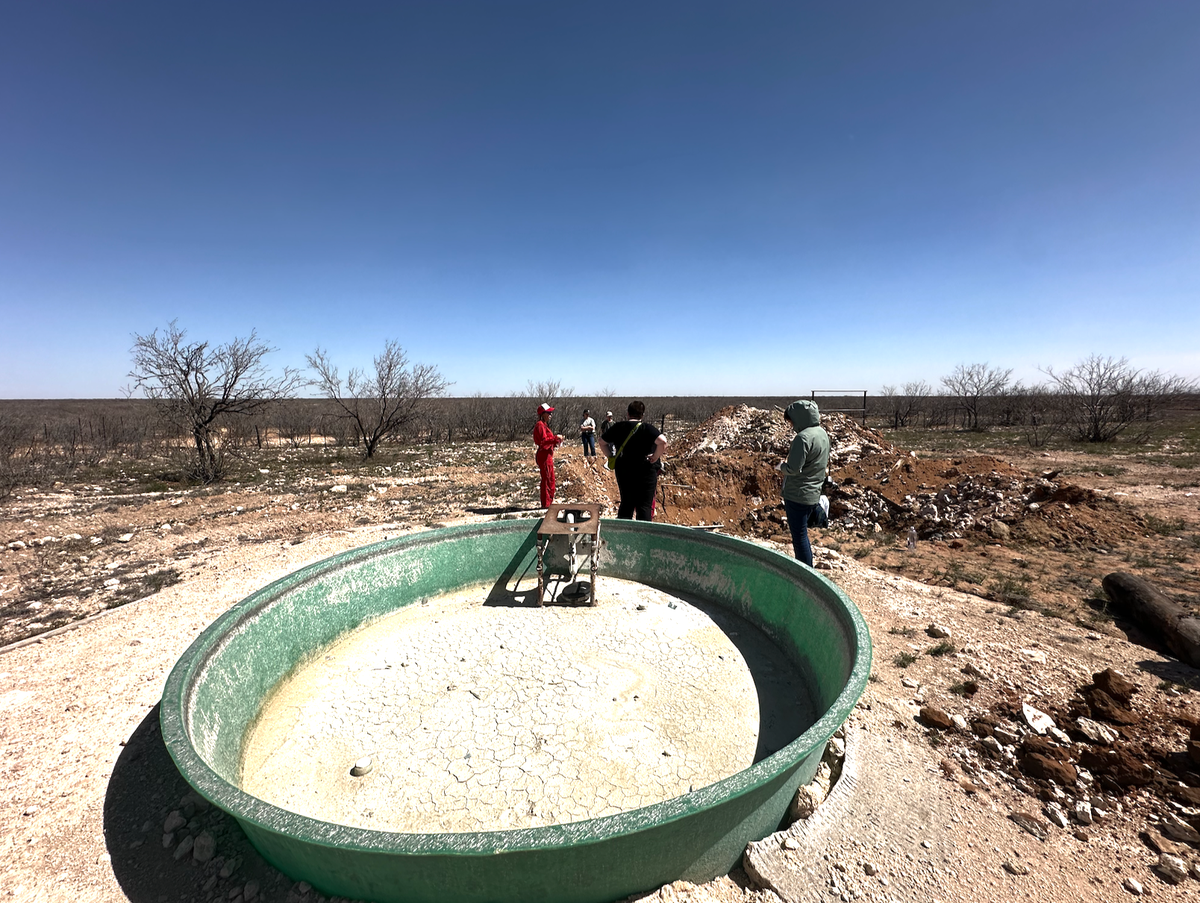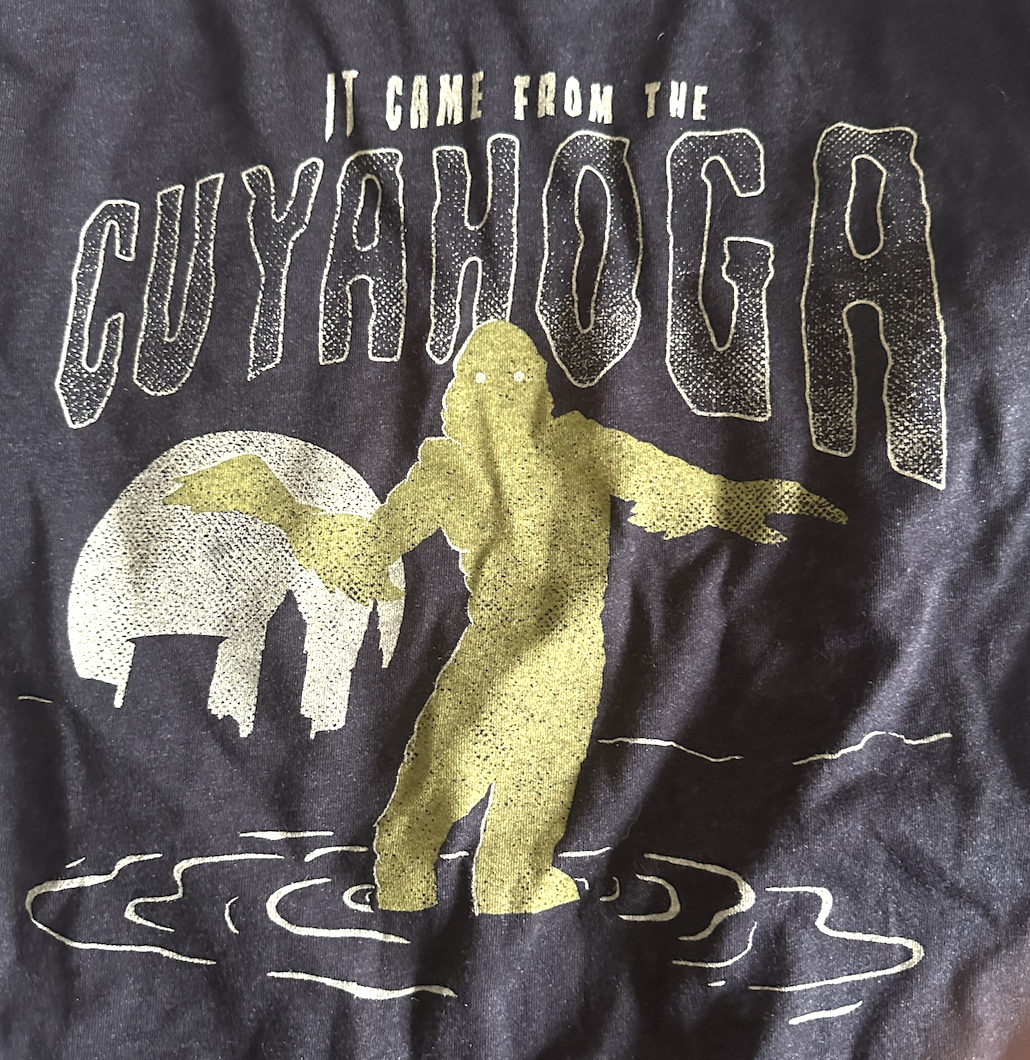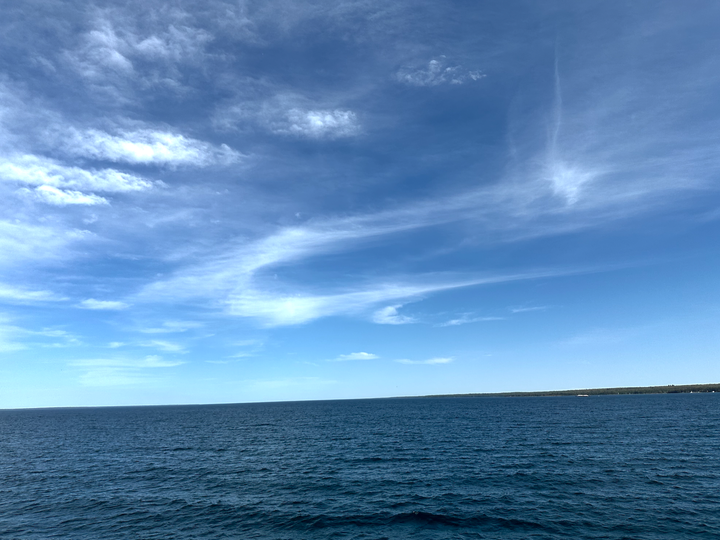A Dirty Water War in the Texas Desert
History is likely to show that the idea of permanently polluting huge amounts of water and then trying to bury that water deep underground under high pressure likely was a really bad idea.

In 2018 I wrote, “The [shale oil] industry currently has no feasible way to dispose of its wastewater using environmentally safe methods … and yet it pushes on full speed ahead.”
Last week after my visit to the Permian region of Texas I wrote, “The only thing that surprised me was the amount of waste water pits. The only standing water in this part of the Texas desert is toxic oil field wastewater.”
Now this was true for the area I was in but there is actually a lake of standing water near there in the Texas desert. Lake Boehmer.
Lake Boehmer is a young lake. It came into existence about 20 years ago when water just started bubbling up out of the desert. How does water just start bubbling up in the middle of a desert? Seems like the sort of thing that would have taken on mystical or religious significance in the past. The Texas Miracle!
But there isn’t very much mystery here. Something is increasing the hydrostatic pressure under the Texas desert and it is causing water to bubble up or blast out of old oil, gas and water wells.
One theory on the cause of this increasing pressure underground is the practice of injecting large amounts of toxic water under high pressure into so-called injection wells. The forces created by this practice are causing earthquakes. And now we are learning more about how this practice is also resulting in the contamination of ground water as the pressures being added to the reservoirs under the Permian are causing oil to leak from old wells as well as more events like the one that caused Lake Boehmer. Sarah Stogner is the ranch manager at the ranch I visited that no longer has potable water due to the benzene contamination of the groundwater. This week she posted a video of another old leaking well with the following comment:
“Contaminated cement and corroded steel is all that is between our drinking water and hydrocarbons/produced water. Why aren’t we all talking about this? There are millions of “plugged” wells out there. How many are actually plugged to prevent the migration of wellbore fluids?” Sarah Stogner
Why aren’t we talking about this? The industry is talking about it, but mostly amongst themselves at conferences and symposiums trying to figure out what to do with all of their toxic water as these problems grow. Unfortunately they don't have answers.
Today is the second day of the Oilfield Water Management Symposium in Texas. The industry continues to look for safe and cheap methods to dispose of its wastewater but unfortunately there are none. And that is bad news for the people who rely on water in the same areas where the oil industry operates.
Injection Wells Plus Abandoned Wells Causing Big Problems
History is likely to show that the idea of permanently polluting huge amounts of water and then trying to bury that deep underground under high pressure likely was a really bad idea. In my 2018 article, I included the warnings of drilling engineer Andrew Hunter
“Andrew Hunter, a drilling engineer for Guidon Energy, recently explained how injection wells can damage the producing wells, saying the situation is “getting worse.”
He also added another point that may be of interest to investors.
“I think people are afraid to talk about this problem,” Hunter said during a Houston conference focused on water. “We’re trying to get the word out to let everyone know how serious this is.”
It doesn't appear that the word got out. It seems the current game of “whack a well” where expensive responses to suddenly appearing geysers of toxic water is likely to get a lot busier in the future. In 2022 another abandoned in Texas well started spewing toxic water.
“Beginning on New Year’s Eve or in the early hours of 2022, an estimated 25,000 barrels of briny water has emerged from the earth with a dull roar each day, turning the surrounding West Texas landscape white with salt and other minerals.”
Injection of wastewater is certainly a likely cause of the pressurization of the reservoir under the Permian desert that causes these desert geysers. However, the practice of “water flooding” older depleted oil reservoirs to produce more oil may also be a factor. This technique is when the industry pumps a lot of water into oil fields to try to increase the reservoir pressure to hopefully push more oil up and out of the wells (this is also now done with carbon dioxide). The oil industry is pumping huge amounts of pressurized water into the ground in Texas for multiple reasons. And that water is taking the path of least resistance to relieve that pressure — which can result in desert geysers. Visiting the Permian and seeing the results of this practice in person and hearing the stories is like watching a horror movie where you want to scream about the deadly danger that is coming while everyone else just goes about their daily lives and offers you free bottled water.
And yet, it isn’t really true that no one is talking about the issue. The Texas Tribune and Inside Climate News have done excellent reporting on this issue. And landowners are certainly worried about the future of water in the Permian after the oil is gone, as the Tribune reported the sentiment of one area landowner:
“If they ruin the water out here, there won’t be anyone left. This will be a desert with no inhabitants,” he said from his dining room table. “It’s only a matter of time.”
I stayed in Midland, TX for two nights. The hotel gave out bottled water because you can’t drink the tap water in Midland. As I wrote last week:
Why? The city water can be toxic. In January there was an arsenic warning for residents and according to the city utility director, "It states that for over the past year we went over the annual average for arsenic allowed.” Midland has a long history of having the oil industry poison its drinking water and as fracking booms, disposing of the toxic waste water is a major cost and challenge for the industry with no viable solutions other than to keep doing what they have been doing. Expect more poisoned water.
I also wrote that the city of Midland, “recently agreed to let an oil company put multiple wastewater injection wells near its drinking water supply.” For now, Midland can use the boom in oil money to buy as much bottled water as visitors need but the boom will end. And then who pays for clean water?
This month the organization Commission Shift filed a petition with the Environmental Protection Agency to revoke the Texas regulator’s ability to oversee wastewater injection well permitting due to the risks. But, the risks have been known for years and nothing changes.
Oil Industry Doubling Down
In 2018, I wrote “Of course, without the injection wells, the fracking industry would have to slow down or stop oil and gas production — so injection wells will stay in use.” Exxon recently agreed to spend $60 billion to buy more of the Permian desert for oil and gas production. Clearly they aren’t that concerned about the water issue. And it appears the powers that be in Texas have a new solution: Dump the toxic water into the rivers. I highly recommend reading Martha Pskowski’s article from last year about this issue. Prepare to be horrified about how the state is moving forward with allowing oil companies to just dump the toxic water in “rivers.”
As Pskowski wrote, Emily Lindley, the head of the Texas Commission on Environmental Quality, spoke at an industry conference last March and encouraged oil and gas companies to apply for discharge permits. “I just want to encourage you to come get a permit from us,” Lindley said. “If you think you want to discharge your water to the state, we’re ready to take those permits. Let’s do it.”
Those would be permits to discharge toxic water into local waterways or what approximates a waterway in West Texas. While driving through Texas I saw a sign for the Pecos River. I was intrigued about seeing a river after some time in the desert. I didn’t get a photo because I didn’t see any river until we had passed it. In that part of Texas the Pecos River is just a dry gulch with a trickle of water. You can see photos of it in Martha’s article.
That is one of the places they would like to dump their toxic water. Water that is a cocktail of pretty much everything you should avoid.
“NMSU and UTEP researchers analyzed produced water samples from the Permian Basin and water samples from the Pecos River. They detected volatile and semivolatile organic compounds, radionuclides, ammonia, hydraulic fracturing additives, PFAS and naturally occurring radioactive material in the produced water.”
Naturally occurring radioactive material is also known as NORM. Justin Nobel has reported on this issue and I expect it is another "crisis waiting to get discovered after the profits are gone."
Texas is the heart of the U.S. oil industry. The fracking revolution that created the boom in the Permian is a mature technology. They’ve been doing this a long time. And now the best solution they have for dealing with their toxic waste is to simply dump it in the river.
“I know it’s not a good thing coming”
As Texas regulators invite oil companies to apply for permits to dump their toxic waste into the dry riverbeds of the Permian, who will pay for the inevitable damage? Or is the plan to just abandon the sacrifice zone known as the Permian once the money has been extracted? The Permian is producing a lot of oil. And, for now, some big profits for the likes of Exxon. And yet, more people are admitting that the Permian is likely peaking for oil production. The industry is now facing the possibility of penalties for its methane pollution. Lawyers are mentioning that the industry could be held liable for groundwater contamination. And then there are all of those abandoned wells and future toxic geysers. And that doesn’t count the climate and fraud lawsuits.
While it may not be making headlines, it’s clear more people can see what is coming, as reported by The Texas Tribune.
“You punch enough holes in it, the whole country’s going to fall apart,” said Greg Perrin, general manager of the Reeves County Groundwater Conservation District. “I know it’s not a good thing coming.”
Who picks up the tab when the whole country falls apart from all the holes punched in it by the oil and gas industry? The Texas Tribune reported how one of the recent toxic water gushing wells cost $2.5 million to remediate. For one well.
And then there are the climate issues to deal with. Between droughts, storms, floods, extreme heat and wildfires, Texas is in the crosshairs of that change. If “things falling apart” is now the expectation for the future, perhaps we should stop punching those holes before it’s too late?
We need an honest accounting of the true costs of the oil and gas industry. And we need to see what the oil and gas industry is really worth. A 2023 Carbon Tracker analysis shows that the remaining value of the California oil industry is less than the cost to clean up the mess. We are approaching that point for the entire U.S. oil industry. If we want the money to clean up this mess, which they are legally obligated to give us, we need to get it sooner than later. However, one reason the oil industry appears not to care about the damage they cause in Texas is that they have a history of walking away from the damage once the money is gone from the oil wells.
In the Texas Tribune article they quote a local rancher who is selling his ranch’s groundwater to the oil and gas industry and seems to have decided it's not “if they ruin” the water but “when.”
“The oil field’s kind of notorious for messing up the groundwater,” he said. “My idea is to sell enough water to where I could save up and buy somewhere else if they do ruin the water.”
He clearly understands how things have always worked and has taken the “if you can’t beat ‘em, join ‘em” approach by adopting the oil industry’s business model: extract and sell what resources you can for profits and then when there are no more profits, leave town with your money and leave the mess for someone else to clean up.
Endnote:
Purely by coincidence I was gifted this shirt this week. Perhaps there will be future versions with "It came from the Pecos." The Cuyahoga River is famous for catching on fire due to the amount of oil and assorted toxins in the river.



Comments ()